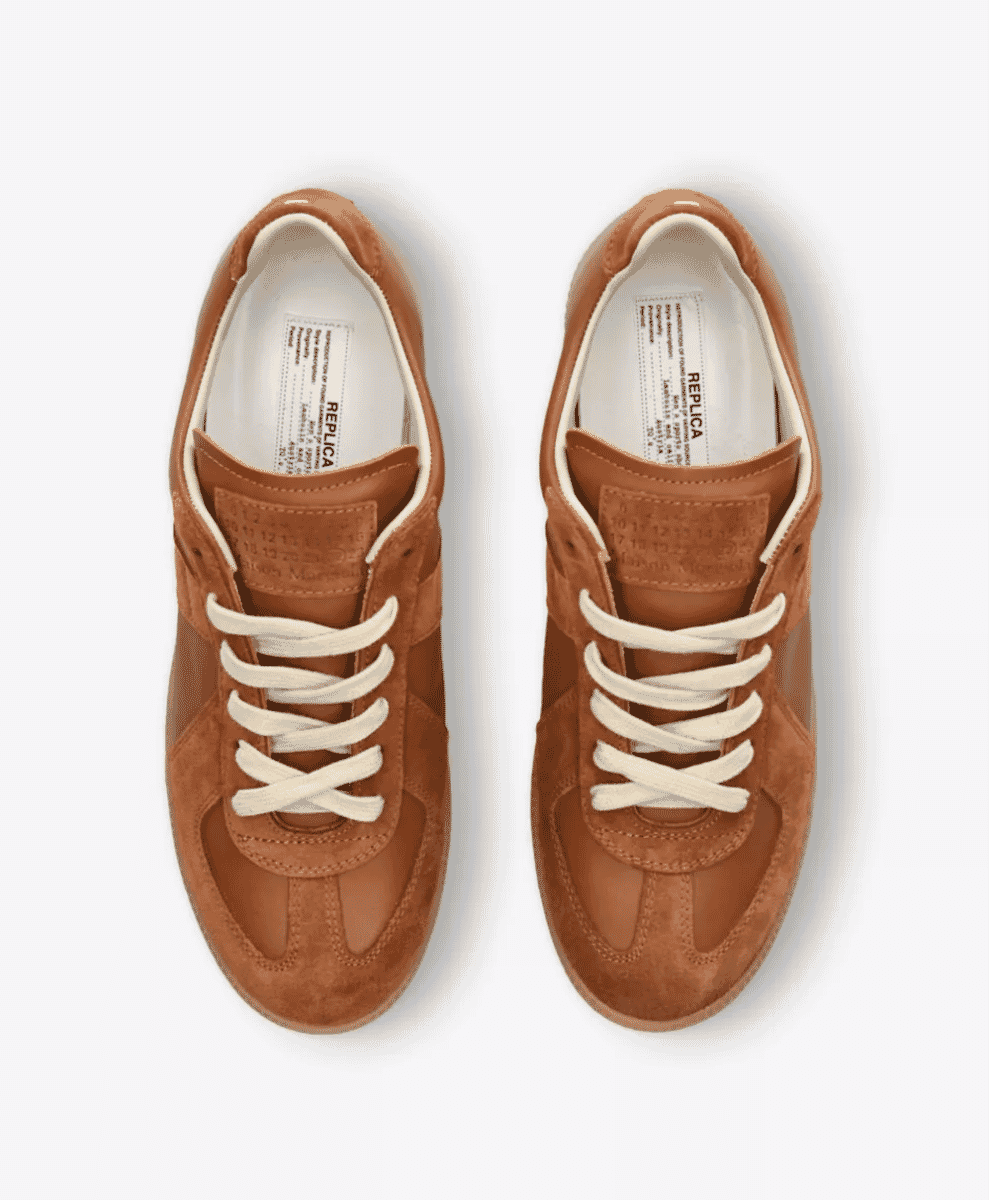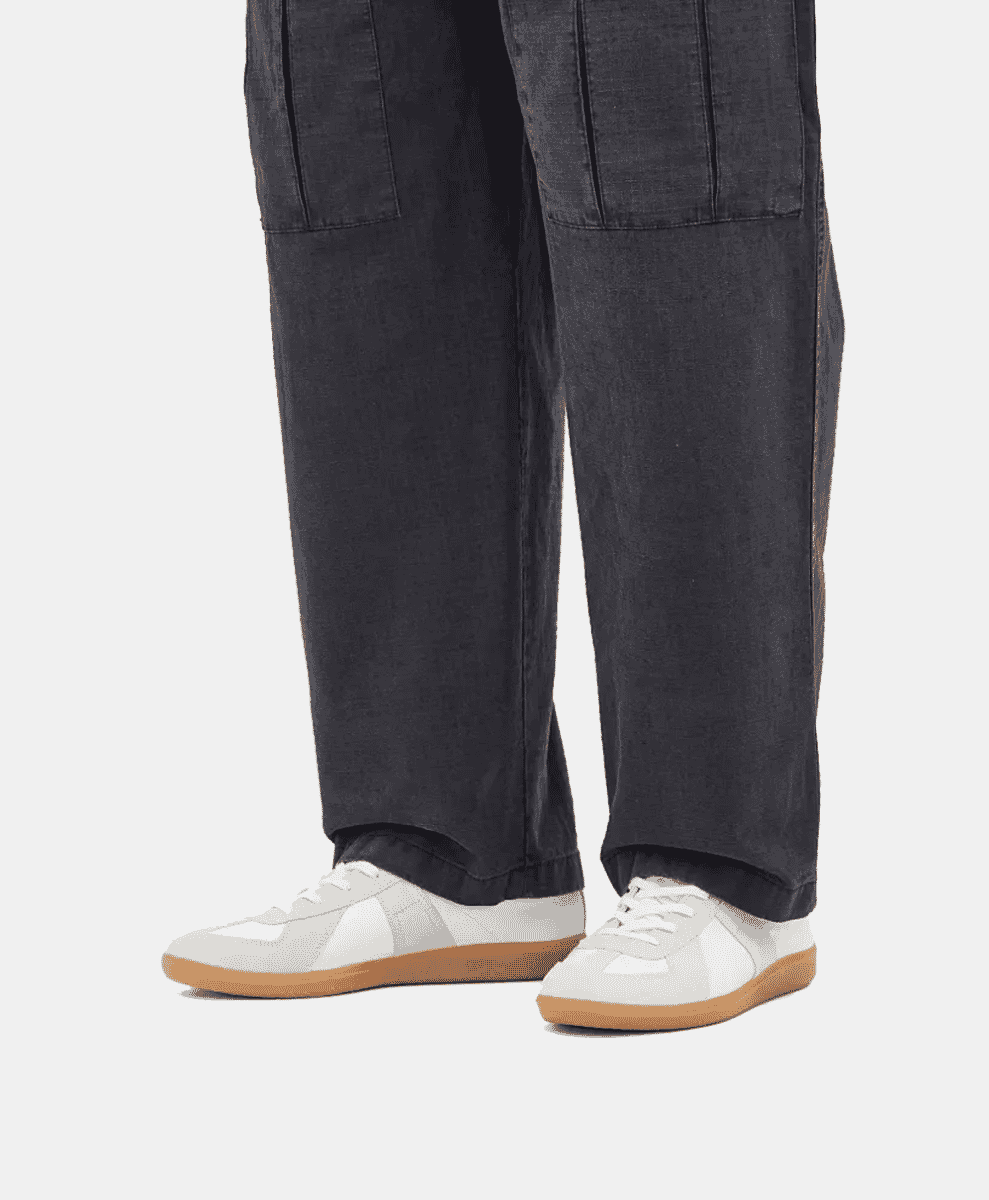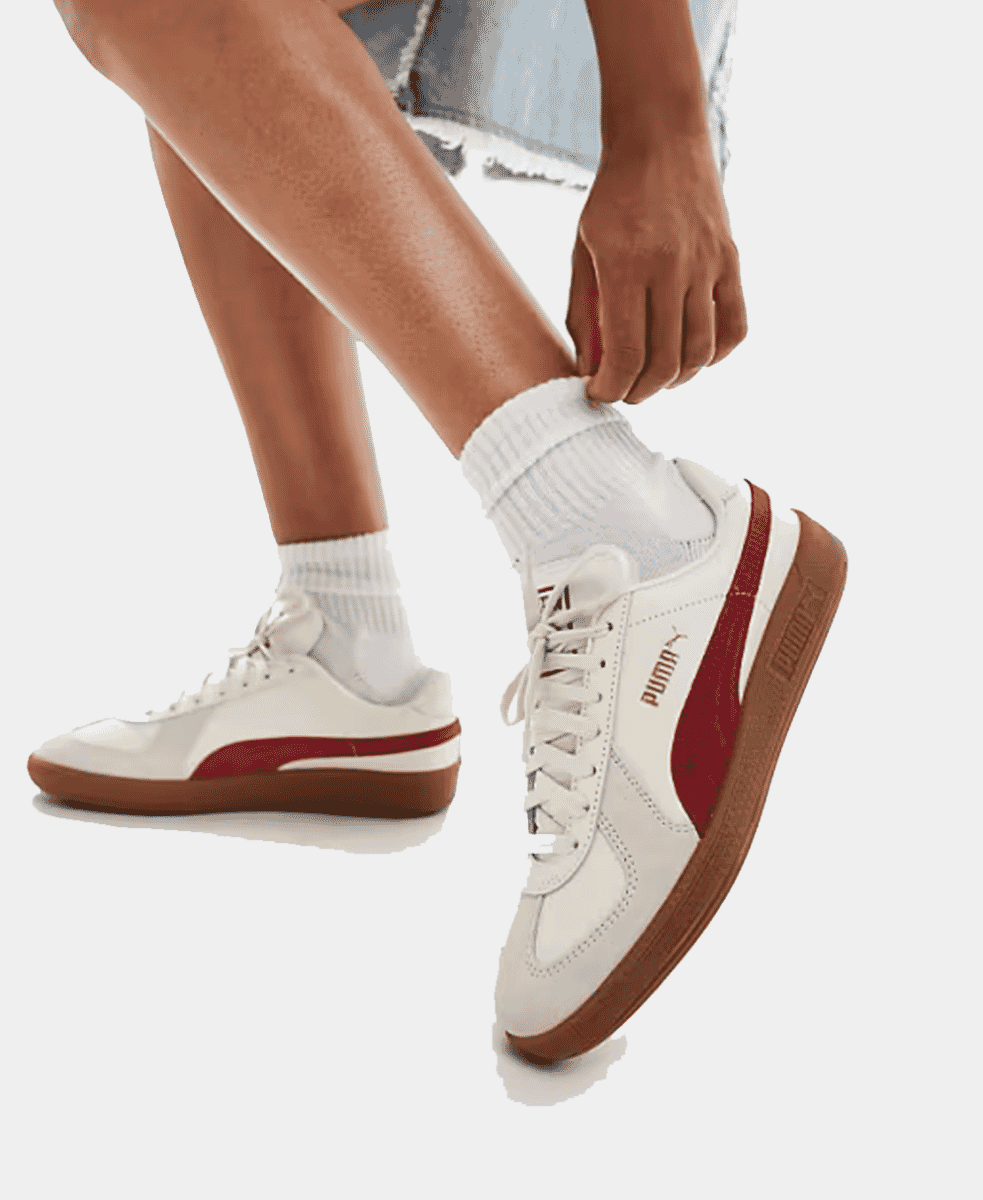Sometimes the simplest ideas are the best
The German Army Trainer (GAT) is that rarest of beasts: a piece of design that has gone from pure function to cultural touchstone without breaking its stride. It’s a shoe that started its life on the drill floors of the West German Army and somehow found its way onto the runway. How it got there is a story worth unpacking.
Table of Contents
- The German Army Trainer: From barracks to boutiques
- The power of restraint
- Function to fashion
- Built for the long haul
- Cultural cachet
- A sustainable choice?
- Enduring appeal

The German Army Trainer: From barracks to boutiques
The story of the GAT begins in the late 1970s. The Bundeswehr – the armed forces of what was then West Germany – needed a training shoe for its soldiers. It had to be tough enough to survive relentless drills, grippy enough for indoor use, and functional without being flashy. In other words, something quintessentially German.
Adidas and Puma, the estranged siblings of the sportswear world, both purportedly had a hand in its creation. Which one deserves the most credit is still up for debate, but the end result was a minimalist sneaker that ticked every box. White leather uppers, grey suede overlays for reinforcement, and a gum sole for traction – it was as practical as it was understated. No logos, no gimmicks, just clean lines and pure unbridled functionality.
For years, the GAT served its purpose without fanfare, existing purely as a piece of military gear. Then, in the 1990s, German reunification brought with it an excess of army supplies, and these shoes began trickling into surplus stores across Europe. It wasn’t long before students, artists, and anyone with a good eye for design started snapping them up. At a time when oversized branding and chunky sneakers dominated footwear, the GAT’s streamlined restraint was like a breath of fresh leathery air.



The power of restraint
What makes the GAT so enduring? For one thing, it’s a masterclass in balance. The white leather is clean but not clinical, the grey suede softens the edges, and the gum sole roots it all with a hint of retro charm. Every element feels purposeful. There’s nothing extra, nothing wasted.
This simplicity makes the GAT endlessly versatile. You could wear it with a pair of battered jeans and a plain T-shirt, or with pleated trousers and a neatly pressed Oxford shirt, and it would work just as well either way. It’s a chameleon of a shoe – not because it changes, but because it lets everything around it shine.
Martin Margiela spotted this potential early. In the 1990s, the Belgian designer introduced the “Replica,” under his eponymous Maison Margiela label, a near-identical copy of the GAT, but made with premium materials and aimed at the high-fashion crowd. Margiela’s version didn’t just replicate the trainer; it elevated its status. Suddenly, the GAT wasn’t just a surplus-store find, it was a bona fide style statement.

Function to fashion
The GAT might have started life in the military, but it has since become a staple of civilian wardrobes. The secret lies in its adaptability. Unlike trend-driven sneakers, it doesn’t pigeonhole itself. It can look casual or polished, depending on how you wear it.
This has made it a favourite among designers looking for inspiration. Dior Homme riffed on its clean lines for its collections, and adidas Originals has reissued versions of the GAT that nod to its military roots while incorporating modern updates. Despite its transformation, the essence of the GAT remains unchanged.



Built for the long haul
The GAT wasn’t designed to impress, it was designed to survive. Every stitch and panel serves a purpose. The leather is tough enough to endure hours of drills, the suede reinforces high-stress areas, and the gum sole provides grip without adding unnecessary weight.
This durability has become one of its biggest selling points. A well-worn pair of GATs doesn’t look tired; it looks better. The leather softens, the suede develops a lived-in texture, and the gum sole holds its shape. It’s a shoe that ages with dignity, which is more than you can say for most sneakers these days.

Cultural cachet
Over the years, the GAT has quietly built a following. Its lack of branding gives it a certain mystique. You wouldn’t know what it was unless you already knew. This has made it a favourite among those who prefer their style understated but considered.
It’s also a shoe that straddles worlds. You’ll find it on the feet of high-fashion editors, but also on students rummaging through army-surplus shops. It’s a shoe that doesn’t care where you’re from or what you do. It just fits.
The GAT’s rise to cult status can also be credited to its ability to slip into subcultures without feeling out of place. Whether it’s paired with minimalist staples or high-fashion tailoring, it never looks like it’s trying too hard. That’s the magic of good design – it adapts without losing itself.



A sustainable choice?
In a time when sustainability is more than just a buzzword, the GAT feels like an antidote to fast fashion. Its durability means it can handle years of wear, and its timeless design ensures it won’t end up in the bin just because trends have shifted.
Vintage pairs are still sought after, a testament to their lasting quality. Whether you’re buying them new, second-hand, or in Maison Margiela’s luxury form, the GAT proves that good design doesn’t need constant reinvention.

Enduring appeal
The German Army Trainer is a rare thing in fashion – a shoe that refuses to date. It’s not flashy, it’s not loud, and it doesn’t try to reinvent the wheel. But that’s exactly why it works.
Whether you’re wearing it for function, style, or both, the GAT delivers. It’s a shoe that doesn’t need to shout to be heard, which is exactly why it’s still standing, decades after it first hit the barracks. A true icon, in every sense of the word.
Next up: ICONS: The New Balance 990.




